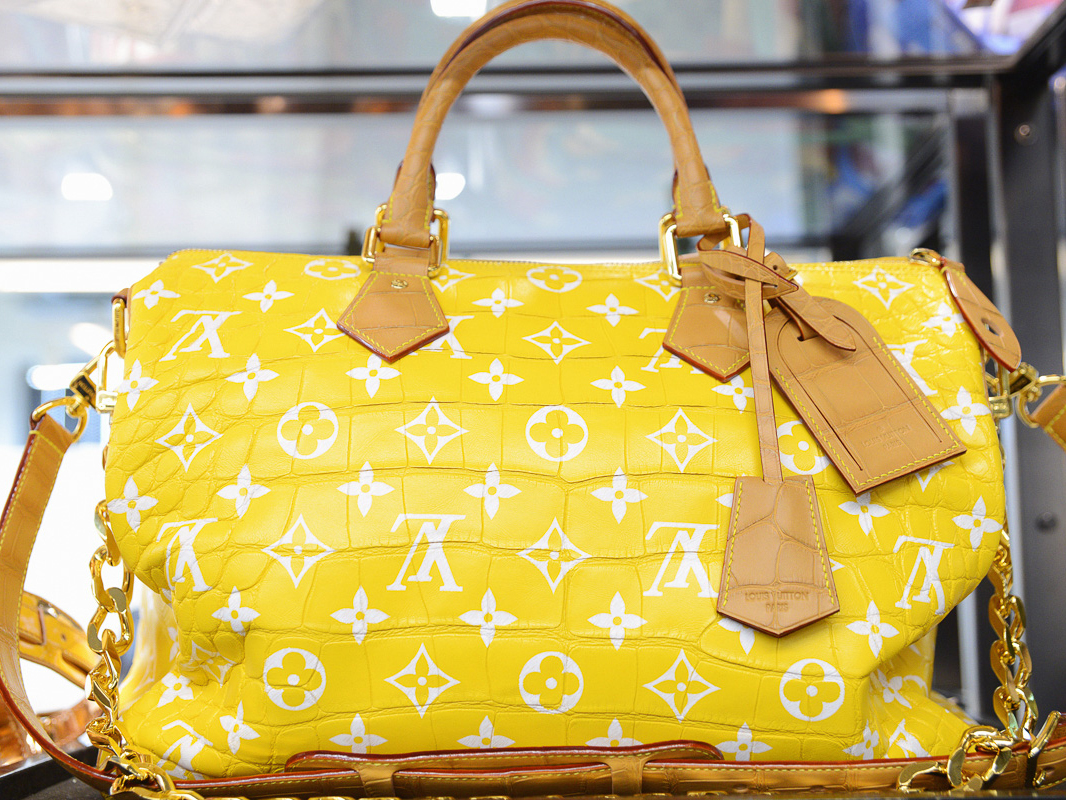Who, in your view, has the authority to determine what is currently popular? Is it the creators of the high-end fashion houses of the past, consistently sketching new designs season after season, in hopes of producing something that might catch the attention of buyers and, in the process, regain a glimmer of their former glory? Or is it the celebrities – the influencers on TikTok and the icons of popular culture – who promote themselves while doling out generic fashion tips in designer clothing, much of which, unsurprisingly, was gifted by those very brands? It could also be the consumers themselves. However, with the alleged “influence” from these self-proclaimed influencers and a growing sense of fatigue when it comes to luxury shopping, they too are susceptible to this endless cycle, chasing the illusion of a sought-after item that may not even exist! It is logical, therefore, for heritage fashion houses to consider bypassing the intermediary and appointing the influencer as the designer. If they can influence effectively enough, the actual design becomes of little real consequence, after all. So, could we be moving towards a future where our favorite singers-cum-socialites-cum-actors-turned-business moguls also lead our favorite brands?
A Pop-Culture Phenomenon
Fourteen years ago, Lindsay Lohan, the reigning Mean Girl of the Y2K era, was brought on board as the creative director for Emmanuel Ungaro, a former haute couture haven. The partnership seemed perfect, and the timing was right. However, the collection turned out to be a disaster, criticized by Suzy Menkes of the NYT as potentially marking the end of celebrity madness in the fashion world. Monica Lewinsky’s foray into designing handbags, relying on the publicity from her very public affair with a president, also met a similar fate. In a world where seemingly every famous socialite has at least their own fragrance, beauty, and clothing lines, questionable partnerships between brands and celebrities seemed to exist solely for our amusement. Sometimes it’s Chief Taste Consultant Miss Kim Kardashian pretending to eat a Beyond Meat burger, while at other times it’s Alicia Keys tweeting her new position at Blackberry from an iPhone. However, the intersection of pop culture, fashion, and entertainment has shifted somewhere between then and now. People in the entertainment industry have begun to make their mark in the fashion world. Now, we have Pharell Williams debuting his $1 million Speedy for Louis Vuitton, the rapper Future leading the charge at Lanvin, Kendall Jenner heading up the creative team at FWRD, and Beyoncé co-designing couture with Balmain’s Olivier Rousteing.
The Power of Celebrity
Well, that’s not entirely accurate. If the latest addition to the LVMH family is any indication, the world’s Phoebe Philos and Daniel Lees are still thriving, with their fanbase seemingly undeterred by the price tag. Conversely, Philo’s return is a breath of fresh air in the increasingly middle-aged, white male-dominated luxury sphere, featuring a collection that is quintessentially androgynous. However, designers of such caliber and influence are few and far between, and not all heritage fashion houses have the luxury of tapping into them. Opting to hire an unproven name, regardless of how much buzz it generates, comes with its own set of risks – as seen with Ludovic de Saint Sernin’s swift exit from Ann Demeulemeester after being hired. This is where the celebrity creative director comes into play. Today’s stars – whether a Real Housewife or just a regular person – are themselves creative forces, often with millions of followers ready to engage with any and every name they endorse. As a result, the nature of brand endorsements has evolved. Simply posing with a product or merely associating one’s name with a campaign no longer guarantees success. With social media offering full access into every aspect of their lives, the current culture demands authenticity. Celebrity endorsements are scrutinized, and any hint of insincerity is instantly called out, if not outright canceled.
The Art and the Artist
However, the view we’ve discussed thus far has been rather simplistic. While appointing Kendall Jenner led to an immediate surge in interest in FWRD (and its parent company Revolve Group, known for influencer marketing), Pharell’s Speedy and Jacob Elordi’s charm have won over the fashion set, despite the Speedys themselves being unremarkable. Herein lies the problem with a creative director whose star power outweighs their actual creative talent. Unlike a designer whose sole job is to design, a celebrity designer is seen as a “safe” choice. It is a purely commercial decision, where brands rely on consumers’ association with their favorite stars. Sometimes, the need for profit can overshadow problematic behavior from celebrities, as evidenced by a recent NYT article on Mr. West’s partnership with Adidas. Kyi Yeung/ Unsplash
Ms. Philo, the designer, has managed to maintain a significant influence. However, from a fashion perspective, this points to a creative void that limits experimentation within the brand and, in turn, stifles innovation throughout the industry. Truly groundbreaking designers, such as Phoebe Philo and Tom Ford, may be among the last of their kind. This is not just because labels are hesitant to hire new faces, but also because the salary for a traditional creative director is often significantly lower than that of a celebrity brand deal. Without the platform new designers deserve, as historian Valerie Steele warns, “Fashion isn’t dead in the water, but it’s experiencing a slow paralysis.”


Leave a Reply